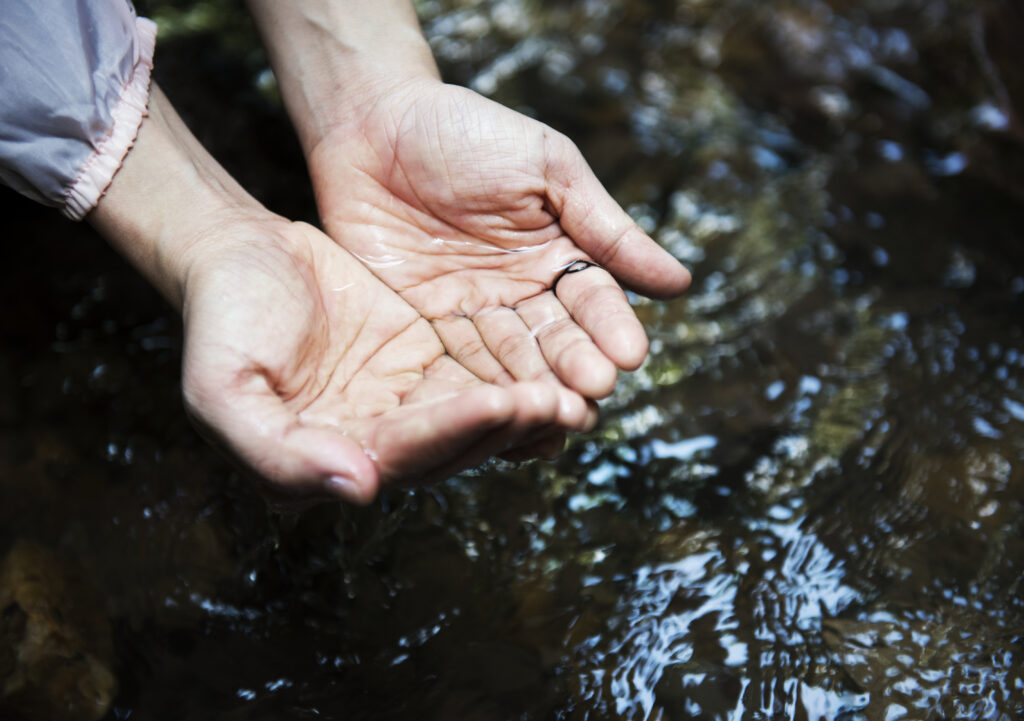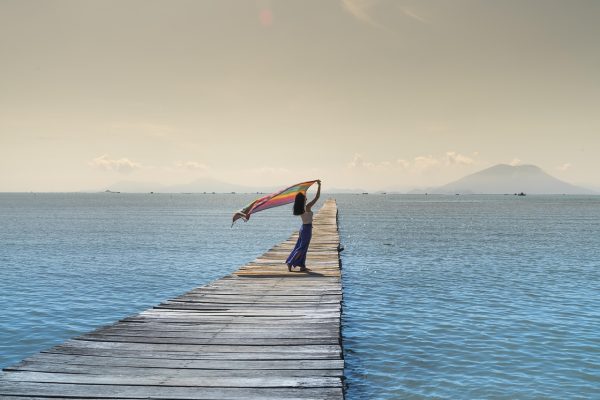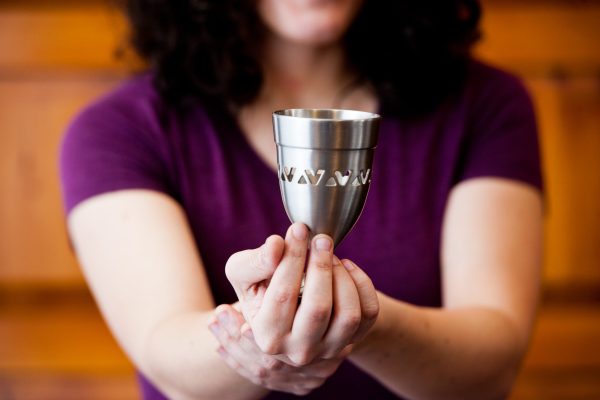With gratitude to Kohenet Shamirah aka Sarah Chandler, whose workshop on water rituals inspired the creation of this ritual.
The video above was taken in Honolulu, Hawaii, with the Oahu Jewish Ohana, Tu B’Shvat 5783, when Rabbi Janet Madden led this ritual.
Introduction
Water is essential to all life on earth, and therefore can be a connection to the divine in ourselves, communities, and the planet. All living things need access to water, and yet for many water is scarce. Water is also the invisible element in a Tu B’shvat seder, which features edible fruits of the harvest and honors trees. But what about the life-giving water that sustains it all? This ritual lifts up the element of water with intentions of shmirah (protection), tikkun (repair), and shleimut (wholeness/healing). It can be used as a way to enter into a Tu B’shvat seder or teaching session or as an intention-setting or witnessing ritual for an environmental action.
Ritual elements
- Broken eggshell (in half, to the degree possible – enough of a shell that it can be used to hold water, like a small cup). The shell should be leftover from eggs that have been used, so as not to waste, ideally eggs that have been humanely sourced. You can have a few backup extra eggshells, but the intention is to use one for the whole ritual with mindful awareness of its fragility.
- Medium to large-sized bowl of water, depending on number of participants (if possible, water sourced from either rain, a well, or a natural body of water)
Setup
You can either do this ritual at a table or sitting in a circle. Place the bowl of water and the eggshell in the center of the space.
Ritual steps
- Leader offers an opening niggun or song (some suggestions: “Come for Water” (chant by Shefa Gold), “Mayim Mayim,” “We shall not be moved,” etc.)
- Handwashing around the circle. First person takes an eggshell, fills it water from the bowl, then washes the hands of the person to their left (the direction of the heart). Then they pass the eggshell to the person on their right and continue until all have had their hands washed. Do not dry hands. Once your hands have been washed, hold them up and let them air dry in silent witness. Continue the pattern of pouring to the person on the left and passing the eggshell to the right until all hands have been washed.
- During the handwashing you could sing a niggun or lead participants in a mindful awareness practice around the sensation of the water on skin – feeling the difference between the presence and absence of water as it evaporates.
- Once all hands have been washed, recite the blessing below.
- At the conclusion, the leader may explain that we are now going to enact the Jewish values of bal tashkhit (בל תשחית – not being wasteful) and kayamut (קיימות – sustainability) by using the water and eggshell to nourish a plant or tree (depending on where you are).
- Pour the water on a plant or tree, and the eggshell can be crushed to add nourishment to the plant (or placed in compost).
Blessing
Berukhah at ma’ayan ha-hayyim, barukh atah makor ha-hayyim,
We bless you, Wellspring of Life, we thank you, Life Ever Flowing, for the water that makes all life on earth possible.
May we be blessed with strength to be shomrei mayyim, guardians of our waters, to be healers of the earth, and to take sacred action on its behalf.











